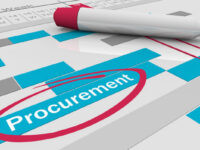Getting things in order for the ATO is just the beginning of what small-business owners should do as the financial year draws to a close. It’s also a time for evaluation and planning.
As yet another financial year comes to a close, many small-business owners are looking for strategies not only to minimise their tax for the current year but also to put in place systems to allow their business to be more profitable and less stressful in the year ahead.
The start of a new financial year is the perfect time for owners to evaluate what is working and what needs to be changed in their business, and create a plan for the next 12 months, to ensure that their business runs smoothly, continues to meet their needs and thrives.
Tax-saving tips
But first things first. Here are my top tax-saving tips for small business-owners for the 2022 financial year.
“Every business owner should take the time at the end of each financial year to complete a business plan.”
You have probably heard these before, but they are good reminders of what you can do to reduce your tax payable and they are things you can easily implement before 30 June:
- Pay superannuation before 30 June for both yourself and your employees. To be tax deductible, employer super contributions need to be in the bank account of the employees’ super fund or the Small Business Superannuation Clearing House (SBSCH) by 30 June. It’s not enough that the funds have left your business bank account so always allow a few days for the transfer, as processing delays could mean the funds don’t get received in time and, therefore, won’t be tax deductible until next financial year.
- Bring forward payments of accounts that are due in July and August or prepay accounts for services that would be due in the next financial year. You can claim a tax deduction for any account paid, as long as the service is provided within 12 months.
- Defer collecting income until July. This strategy will push the tax payable on that income into the next financial year.
- If you are considering purchasing business assets early in the 2023 financial year, consider making that purchase in June to take advantage of the instant asset write-off.
- Write off any bad debts.
- Complete a stock take if applicable.
- Get your records in order. Nothing is more costly than paying for something but forgetting to claim it because you didn’t have a record or receipt.
It’s also a good idea to remind your employees that payment summaries are no longer issued. This will enable your employees to complete their income tax returns nice and early. They will be grateful to you for this. Nothing is more frustrating than having to wait to lodge your tax return and receive that much-needed refund because your employer hasn’t finalised their STP lodgement.
If you are in the building/construction, cleaning/road freight, courier/information or technology/security/investigation/surveillance services sectors, you need to complete and lodge your Taxable Payments Annual Report (TPAR) with the ATO by 28 August.
The ATO has already indicated that it will be fining businesses for late lodgement of these forms. Don’t give your money to the ATO unnecessarily. ATO fines are not tax deductible, so that is a double hit.
Knowledge is power as they say, so have your accountant complete your tax return as soon as possible so that you know what you need to pay. This will allow you to plan for the payment of your tax bills and incorporate that expense into your budget, which may reduce the impact on your cashflow, because you will be able to pay at a time that better suits you and your business.
Review your legal structure
Once your taxes are out of the way, the end of a financial year provides you with the opportunity to determine if you are running your business as the correct type of entity. Perhaps you should be trading as a family trust or a company, instead of a partnership or sole trader? Or vice versa.
Your business’s legal structure determines your tax obligations, responsibilities as a business owner, paperwork requirements and much more – so it’s crucial to get it right. Do these other entities give you asset protection or opportunities to minimise tax that your current structure does not?
Take this opportunity to evaluate what is best for you and your business and start afresh in the new year if you need to make changes. Always seek advice from a qualified accountant before making any changes to your business structure, as it may trigger some capital gains tax liabilities and other issues.
Evaluate your business plan
Of course, running a successful small business is more than just looking at tax-saving strategies and legal structures. It’s about having your business deliver you the income you need to enjoy the lifestyle you desire and the freedom to relax and enjoy your downtime.
Every business owner should take the time at the end of each financial year to complete a business plan for the coming 12 months and review their business plan from the previous year.
An effective business plan will help you look at your business from the outside, allowing you to finally work on your business, instead of simply in your business. It gives you an insight into the heart and soul of your business, what has been working and, of course, what hasn’t worked.
Creating a business plan and reviewing it each year will give you clarity around what you need to focus on so your business can grow. It will help you articulate your important professional and personal goals and establish strategies to achieve these. This is the key to unlocking the true potential in your business.
In the past, business plans tended to be long, weighty documents that were relegated to the bottom drawers of work desks, never to be seen again. The new, one-page business plans modern accounting practices employ are much more useful. They are concise and easy-to-read documents that summarise your high-level strategy in one place, allowing you to:
- Clearly articulate the vision and purpose of your business (if you don’t know your reason for being, how do you expect others to?).
- Understand your financials.
- Identify your goals and put strategies in place to achieve them.
- Set 90-day targets so you are accountable to your goals. This will remove one of the major blocks for small-business owners – procrastination.
Your business plan should include your gross revenue targets and key performance indicators (KPIs), so you can record and measure your progress, track your improvements and make adjustments in real time.
Now is the perfect time to reflect on the year that was and set business goals for the next 12 months. This will ensure that you start the financial year strong and give you the greatest chance of business success in the year ahead.
This article first appeared in issue 37 of the Inside Small Business quarterly magazine











